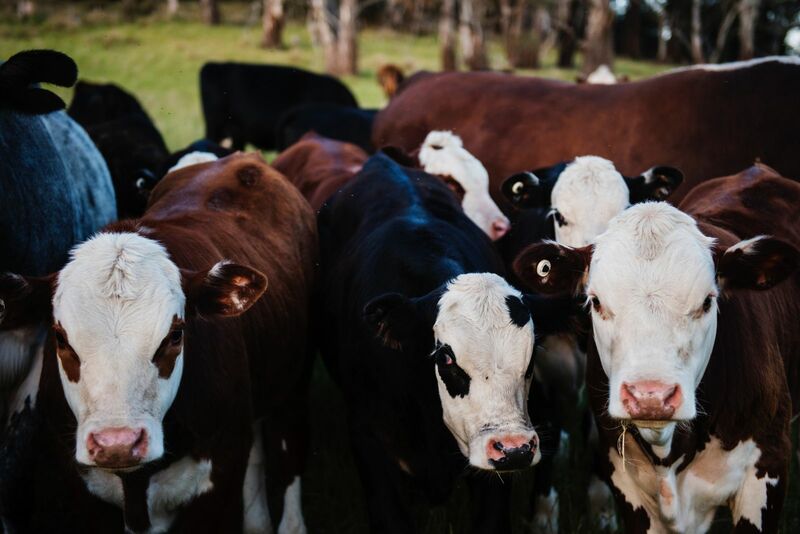
Labor Day marks the end of the summer as students return to school and worker vacations end. The final four months of each year is a transitional period when the temperatures fall, agricultural harvests occur, and the cool fall is a prelude to the cold winter.
The aroma of sizzling meats that fill the summer air will not end as it will continue to make mouths water during football tailgate parties. However, the sun and fun of the summer are ending, meaning many barbecues will move back into storage for the 2024 grilling season beginning next May.
Cattle and hog prices tend to move to seasonal lows after the peak demand season. However, cattle have remained bullish since the April 2020 low, while lean hog futures have been seasonally choppy.
Live and feeder cattle reached all-time highs in July 2023
As the global pandemic gripped markets across all asset classes in April 2020, live cattle futures declined to 81.45 cents per pound, the lowest price since December 2009. While futures prices dropped, consumers did not benefit as retail prices soared because of meat packing plant shutdowns and supply chain issues.

The chart highlights the substantial rally in live cattle futures that moved to a new record high in 2023, reaching $1.82975 per pound in July, during the heart of the grilling season. Live cattle rallied 124.6% from the April 2020 low to the July 2023 high.

Feeder cattle futures dropped to $1.0395 per pound in April 2020, the lowest price since March 2010. In July 2023, they reached $2.5360, a 144% increase from the 2020 bottom.
The prices remain in record territory at near $1.80 per pound for live cattle for delivery in October 2023 and above the $2.50 level for September feeders.
The trend is always your best friend, and it ignored seasonality in cattle from 2020 through 2022
There is little doubt that the trend in cattle has been very bullish since the April 2020 lows. In typical years, prices rise as the grilling season approaches and decline when the peak demand ends. However, the bullish trend has been so powerful that cattle ignored seasonality in 2020, 2021, and 2022. Any seasonal corrections were marginal and gave way to higher highs.
As the beef markets head into the 2023 offseason in record territory, prices could be more susceptible to a seasonal selloff over the coming weeks and months.
Hogs are another story, and the 2023 seasonal selloff has already started
While cattle have ignored seasonal price dynamics, hogs have remained on course. However, the lean hog futures arena made higher lows from 2020 through 2023, but higher highs only ran through 2022.

The chart highlights the lower 2023 high but higher lows since lean hogs reached a 37 cents per pound low in April 2020, the lowest price since August 2002. Lean hog futures have displayed seasonal weakness over the past years. In 2023, the price of the continuous contract fell from a $1.0495 high in August to below the 83 cents per pound level on August 31. Over the past years, hog prices have held above the 70 cents per pound level, a higher low than during previous offseason months.
The reasons for elevated prices
The following factors have contributed to high meat prices:
- Inflation has caused feed, transportation, and other input costs to rise, putting upward pressure on wholesale beef and pork prices.
- Increased regulations on animal protein producers have pushed prices higher. The rules addressing animal cruelty and toxic emissions have cost ranchers dearly over the past years.
- As output declined because of inflation and regulations, meat supplies have struggled to keep pace with the demand.
While we are moving into the offseason, and prices could turn lower from the current levels, the base prices will likely remain higher than over the past years as production costs have increased.
A seasonal selloff could be on the horizon in cattle, but short positions require tight stops
The only route for risk positions in cattle and hog markets is the Chicago Mercantile futures and futures options arena. Cattle and hog futures liquidity is low and volatility high, making ETF and ETN products challenging. The COW ETF that tracked meat prices ceased trading in June 2023, making futures the only option for market participants looking for animal protein exposure.
We could be on the verge of a seasonal selloff in the meat arena. The selling already began in hogs, and prices could experience further declines.
Meanwhile, live and feeder cattle futures have shown no signs of turning lower. However, the potential for a long-overdue correction is high at record levels. Anyone shorting live or feeder cattle should use tight stops as the trends remain bullish. In all commodities, the cure for high prices is always high prices as producers increase output, consumers reduce purchases, inventories build, and prices turn lower. Time will tell if cattle markets have reached unsustainable prices or if the bullish stampede will continue throughout the 2023/2024 offseason that begins next Monday, on Labor Day.
On the date of publication, Andrew Hecht did not have (either directly or indirectly) positions in any of the securities mentioned in this article. All information and data in this article is solely for informational purposes. For more information please view the Barchart Disclosure Policy here.






